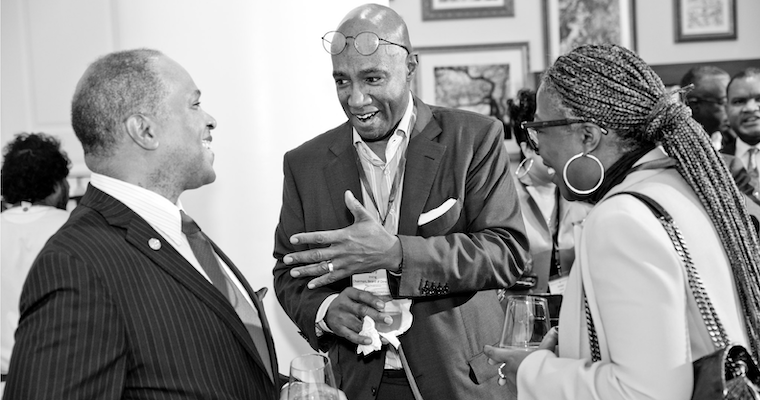
Black Corporate Board Readiness Program Taps into the Power of Community to Impact Global Business World
Ask alumni of the Black Corporate Board Readiness (BCBR) program at the Leavey Executive Center what sets it apart from other board training programs, and you get one common answer: the network.
The program may be relatively young — the center launched BCBR in February 2021 — but its curriculum and community of leaders and mentors have had an outsized effect on participants and boardrooms across the country. BCBR alumni occupy 158 board seats, both public and private. The program has educated 317 leaders in its short three-and-a-half years of existence.
One of those leaders, Anita Lynch, calls it a “critical mass” of talent. Lynch, an executive with 25 years of tech and data leadership experience, had already served on one corporate board before going through the BCBR program. She had experienced other board training programs but wanted to further hone her skillset.
What she found at BCBR was a curriculum that covered all the critical nuts and bolts of board service but went deeper by providing the lived experience of mentors and, ultimately, a community.
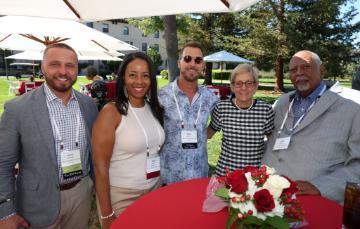
“There’s a commitment to creating a community that starts with putting people through the program,” Lynch says, “but it also includes gathering sitting directors who are Black and basically amassing this huge community of board-ready, high-performing senior Black executives nationwide.”
Lynch, also an adjunct professor at the Leavey School of Business at Santa Clara University, is one such high performer. Since going through BCBR, she has earned a spot on the NASDAQ US Exchanges board, where she puts her decades of tech experience to use on critical topics such as AI governance.
Lynch and other alumni point to several benefits of the BCBR network and program. It’s a place to share and learn from experience. It’s a place to spread opportunities. Perhaps most important, it’s a growing pool of talent that companies can draw on in a world that requires more diverse skillsets and perspectives.
Curriculum and Community
Participants enter BCBR with a range of experience and understanding about what board service entails.
For instance, LaShonda Anderson-Williams says her “board journey” got off to a bumpy start. In 2018, while working at Microsoft, she was approached and interviewed for a board role. During the interview, she feels she leaned too heavily into her operations and go-to-market capabilities and failed to grasp how that differs from an advisory role.
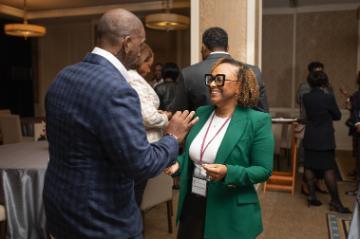
“I was very much unaware of what I was signing up for,” Anderson-Williams says, “so I didn’t get that role. That became a source for me to say, ‘I need to figure this out and take stock.’”
She read books and devoured podcasts on board service. But what really spurred her to action was the BCBR network. By 2021, she was in an executive role at Salesforce, and several of her fellow leaders were early participants in BCBR. On top of that, the company’s board includes Robin Washington, an experienced and well-known board leader and advisor to BCBR since its early days.
With encouragement, Anderson-Williams entered the program. She and other participants studied the various types of board committees and duties, and, perhaps more importantly, they heard from experienced board members how their roles and duties play out in a real boardroom. That was especially enlightening.
“Your job is not management's job,” says Anderson-Williams, who has served on both public (Digimark) and private (Medical Informatics Corp.) boards since going through the program. “Your job is oversight. Your job is to provide guidance and to represent the shareholders, not to run the business.”
Fellow BCBR graduate Ed Magee calls it a “nose in, fingers out” approach to board governance. “The program does a phenomenal job of the educational component, but it's not just teaching you about the mechanics of board service,” he says. “They also make investments in your board bio and how to interview and reflect on your personal brand, really going deep on what separates board governance work from being an operator in a company.”
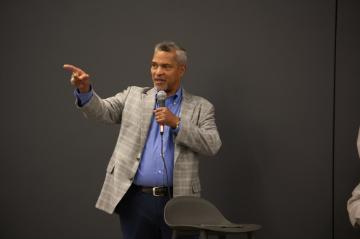
Magee has had a multi-phase career, from early days at the U.S. Naval Academy and Marine Corps, to a corporate career offering supply chain expertise for companies as diverse as Harley-Davidson and Fender, to his current role in higher education as vice president of strategic operations for Belmont University in Nashville.
Magee believes adaptation and reinvention are key to success. Entering board service can be a part of that reinvention. “BCBR peeled back my blinders about opportunities and board service,” he says. “Four months after I graduated, I was interviewing at WD-40 for a board role.”
Both Anderson-Williams and Magee stress the need to find the right fit for board service, too. Consider your capacity, they urge. Ask questions about company culture. Assess what skillets a company is looking for and whether you bring those with you. Ultimately, think about how comfortable you will be speaking up in the role.
“Don’t forget, the interview process is two-way,” Anderson-Williams says.
Lifting While Climbing
For BCBR graduates, the program is not a one-and-done experience. It’s a community because nearly everyone feels compelled to repay mentorship in kind. Lynch, Anderson-Williams and Magee all serve as facilitators, mentors or advisors for the program.
“I think the number that we look at is between 80 and 85% of all board placements happen through a relationship” Magee says, “so you've got to do some intentional networking.” In fact, Magee now leads BCBR sessions on intentional networking.
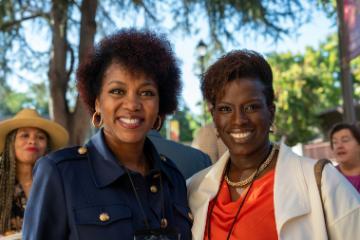
Likewise, BCBR graduate Zain Oke gives back by facilitating sessions on understanding board committees and the duties of finance boards — topics she’s well-equipped to handle after a career in finance, most recently as an executive for AAA Northern California.
Since going through the program, Oke has served on boards and as audit committee chair for both Daily Harvest and Electriq Power. She’s been through CEO changes, product recalls and other major happenings in the life of a board. Like others before her, she’s inspired to share her own lived experience so that future leaders can be better equipped for board roles they might not have considered yet.
“Let's acknowledge it: We sometimes will be the first on a board as a diverse board director,” Oke says. “Hopefully, we are not the last. And so there's a sense of responsibility, of understanding. How do I ensure that I don't mess up in order for the next person to have an opportunity to continue to serve in this space? How do we continue to lift as we climb?”
One way to continue to lift is to share opportunities, Anderson-Williams says. After going through the program, she frequently gets calls about board roles. She already serves on two boards and doesn’t have the capacity for another role, but sometimes she’ll still take the phone call — and have three other names ready to provide as potential candidates.
“It’s really about finding the talent,” she says, “and making the connection that this is where the talent is, and this is where these potential board candidates are.”